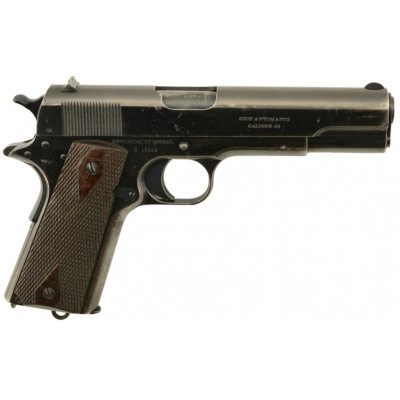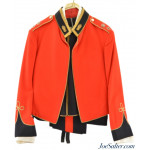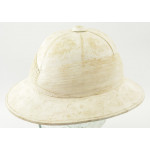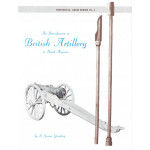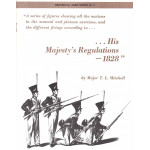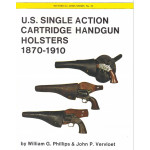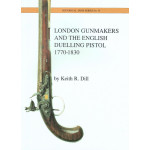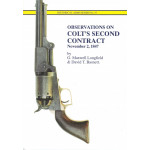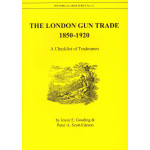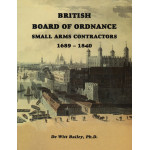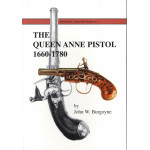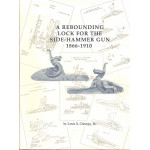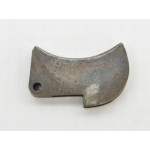Colt Commercial Model 1911 Pistol Belonging to the Marquess of Ailesbury DSO
Serial #C17688, .45 ACP, 5” barrel with an excellent, bright bore. This is a 1915 manufactured, London proofed pistol that has about 80-85% of the original blue finish remaining with silvering along the exposed edges, numerous small scratches from use, and fading to a mottled gray patina on the engraved gripstrap: “Marquess of Ailesbury DSO”. The pistol has a correct “long-legged” spring guide, WW2 Flannery barrel (proofed at London), and the checkered double-diamond Colt grips (15 rows of checkering) are in fine condition with minor surface blemishes and light wear, mostly around the butt and trailing edges, as well as some flattening of the points. A single, unmarked, two-tone lanyard loop magazine is included. This pistol was owned by Sir George William James Chandos Brudenell-Bruce, DSO, TD, KStJ, DL, JP, 6th Marquess of Ailesbury and Earl Cardigan. He was born on May 21, 1873, the son of Sir Henry Brudenell-Bruce, 5th Marquess of Ailesbury, and educated at Westminster School. He entered the army afterward and had reached the rank of Captain in the Royal Wiltshire Yeomanry before service in the Second Boer War. George Chandos (as he preferred to be called) was mentioned in despatches, and awarded the Companion of the Distinguished Service Order in November, 1900. In 1911 he succeeded his father as Marquess of Ailesbury, and subsequently served throughout the First World War, again being mentioned in despatches, and awarded the Territorial Decoration. It was during the War that he received, or purchased this pistol. After the war, Chandos was invested as a Knight of St. John of Jerusalem, made Deputy Lieutenant of Wiltshire, and Justice of the Peace. Although a member of the Conservative Party, he was, for a time in the 1920s, a member of Oswald Mosley’s British Union of Fascists, but by the outbreak of the Second World War, he seemed to have distanced himself from his fascist views, and was a member of the Home Guard (it was during the War that the Flannery barrel would’ve been installed). The Marquess passed away on August 4, 1961, and was succeeded by his son, Cedric, who became the 7th Marquess of Ailesbury. This is a wonderful piece of British military history, owned by a highly decorated member of the aristocracy who had ties to a controversial interwar political movement. FFL or C&R


